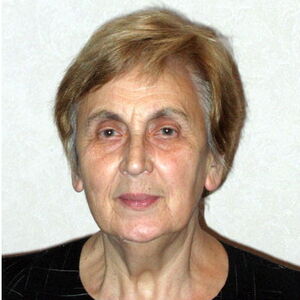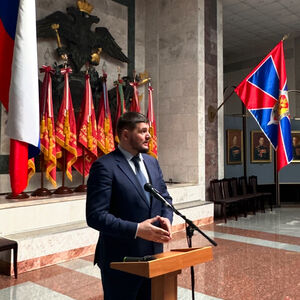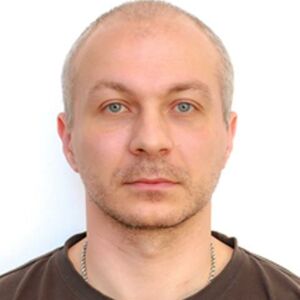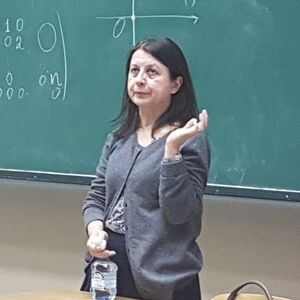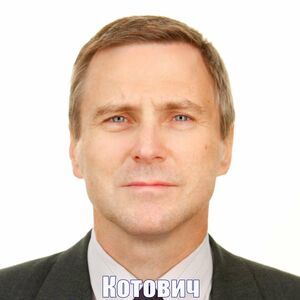Текст приложения (1194538)
Текст из файла
ПРИЛОЖЕНИЕ 1
МЕЖДУНАРОДНАЯ ТРУДОВАЯ МИГРАЦИЯ КАК ФАКТОР СОЦИАЛЬНО-ЭКОНОМИЧЕСКОГО РАЗВИТИЯ
Студент гр. Ц45 ____________ А. А. Болгов
Консультант ____________ Н. А. Чэ
1. Theoretical basis of the research into the labor migration
1.1 Essence and types of the international labor migration
The word ‘migration’ has appeared as a derivative of Latin "migrare" which means "to pass" or "to move". It is commonly used as a collective term. This term describes a complex social phenomenon connected with spatial movement of people, its consequences, and factors causing it. The territories on which migration occurs are divided into giving and accepting population or, in other words, into the places of departure and arrival, leaving and settlement of migrants.
So far, there is no uniform definition of the population migration. Also, the natural movement is interpreted differently by certain scientists and scholar schools. One of them refer all movements of the population to migration even if it was moving from one apartment to another within the city, or visit to a theater.
Others refer to the ‘migration’ a person’s movement in a certain area or outside it, continuous and temporary movement of people in space and in the same human settlement.
In a broader sense, the concept ‘migration’ refers to the variety of the spatial movement of the population irrespective of its character and purposes. Business trips, vacation trips, and regular departures for work or study outside the places of residence, arrival at some area for temporary or seasonal jobs, moving from one settlements to others, etc. are ranked as such movements. The above-listed types of people’s movements (temporary and constant) between the territories and settlements refer to incidental, pull and push, seasonal, and irrevocable migration. In some cases, one of them is evolved into others; the temporary migrations are often the predecessors of the constant ones, and the seasonal (temporary) migrations transform into irrevocable, etc. All of them are specific in character, and the population involved in them pursues the various aims.
The incidental migration is represented by business, recreational, and other trips that are made irregularly by time and are not necessarily in the same directions. They are considered to be the temporary and returnable migrations. If in business trips, only the able-bodied population takes part, in recreational trips, its other part can participate as well. This type of migration in Russia is insufficiently studied. However, there is a tendency when with increase in the population’s welfare the increase in the number of departures out of borders of the residence places for rest, treatment, and for other purposes is observed.
The push-pull migrations are daily or weekly trips of the population from residences to the places of work (study) located in different settlements and back. The push-pull labor migrations of the population from the neighboring countries through their borders are called the frontal lines.
The comparatively new subtypes of the push and pull migration can include labor activities that is executed by out by job sharing. In this case, the period of the pendular fluctuations of migratory processes makes a longer period determined by the running cycle. The purpose of such movements of the population is obtaining a higher income in the new place of work without changing the residence.
The seasonal migrations of the able-bodied population generally include the movements of the able-bodied population to the places of temporary job and residence for a period of several weeks or months with preserving the former constant place of residence. On the one hand, they provide for their participants a higher income than in the places of their permanent residence; and on the other hand, they satisfy the needs of production that has deficiency in labor. Such migrations are caused by the fact that in the economy of some areas, the dominant position belongs to the branches in which the labor requirements are unstable in time. As a result, during the seasons of the greatest amount of work, these branches of industry experience the exceeding need in labor.
The irrevocable (stationary, full, and final) migration or resettlement is the understanding of the concept ‘migration’ narrowly. There is no insuperable wall between this and other types of migration. This type of migration simultaneously meets the two conditions: first, the population moves from some settlements to others; second, the movements are followed by change of permanent residence. The first condition excludes from migrations all the possible movements of the population within the same settlements, and the second - returnable or short-term trips to other inhabited places.
The external and internal migrations are distinguished. In the external migration, the flows cross the borders of the countries or other subnational entities. The internal migrations refer to the movements of people that do not go outside the certain territories (settlements).
Workforce is the part of the population of the country that has physical growth and development, mental capacities, and knowledge required for engaging in the socially useful work.
The amount of the workforce depends on the population size, the condition of its reproduction, and structure on gender and age.
The main part of the workforce of the country consists of its population at working-age as well as the teenagers, and persons of retirement age who are capable of working.
Migration of the workforce is the spatial movement of the able-bodied population caused by the changes in development and placement of production, and the conditions for the workforce existence.
The international movement of the workforce undergoes the 4 basic stages in its development:
The first stage is directly connected with the Industrial Revolution which took place in Europe in the late 18th century - the middle of the 19th century. The consequence of that Revolution consisted in the fact that accumulation of the capital was followed by growth of its organic structure. The latter had led to the "relative overpopulation" that caused the mass emigration from Europe to North America, Australia, and New Zealand. It had laid the foundation for forming the labor world market.
The labor world market contributed to:
• economic development in the countries of immigration as it satisfied the sharp need of these countries in the workforce, in the conditions of high rates of the capital accumulation and absence of the reserves for attracting the labor force;
• colonization of the low-populated areas of land and drawing the new countries into the system of the world economy .
The second stage covers the period from the 80-s of the 19th century before World War I. During that period, the scales of accumulating the capital highly raised which was characterized by strengthening the unevenness of this process within the world economy. The high level of production and capital concentration in the advanced countries (the USA, Great Britain, etc.) causes the increased demand for additional labor, stimulates immigration from less developed countries (the backward countries of Europe, India, China, etc.). Under these conditions, the structure and qualification structure of migrants changed. At the beginning of the 20th century, the bulk of migrants were made by the unskilled laborforce.
The third stage covers the period between the two World Wars. The peculiar feature of this stage is reducing the scales of the international labor migration, including the intercontinental migration and even a remigration from the classical country- immigrant - the USA. It has been conditioned by the following reasons:
1) The consequences of the world economic crisis of 1929-33 shown in growth of unemployment in the developed countries and need in restricting the migratory processes;
2) The closed - totalitarian nature of the USSR development that excluded it from the number of the countries -emigrants of labor force.
The fourth stage began after World War II and proceeds till the present. It is caused by the scientific and technological revolution and monopolization of the international labor markets and received the name "leakage of minds" and by strengthening the state and interstate regulation of labor migration.
Generalizing the characteristic of the regularities of migration of labor force, it is possible to claim that it consists in significant and continuous increase in its scales, attraction to this process of workers of almost all the continents.
Migration flows develop wavy. At first, emigrants- pioneers get their foothold in the new country. Then their relatives and friends arrive there. The wave of emigration gains strength, but through a certain period, it goes by. Then the process repeats: the first wave of emigrants is followed by the second, etc. At the same time, there is dependence between migratory waves and fluctuations of business activity. During a crisis, the flow of emigrants, as a rule, increases and during the economic boom, there occurs an active immigration.
Thus, we have considered the main characteristic features that inherent to this global process. Without doubt, migration as a process has an objective character, and the consequences of this process can be both positive and negative.
1.2 International experience in the labor migration regulation
Regulation of the international flows of labor occurs at the different levels – this is both the national level and the interstate level that is caused by the existing realities of the world economy. In the modern world economic system, the strengthening of migratory processes is caused by a variety of reasons among which we distinguish the following: existence of inter-country differences in the life quality of the population, military operations in a number of regions of the world, unevenness of the economic development of the countries throughout the world, excess the workforce in some countries and lack of highly skilled workers in the others, development of information society, and transport availability, practically, in any corners of the Earth.
The migration policy of the different countries is variable; and it is aimed at regulating the supply and demand on labor market that significantly influences the quality of life of the population [1]; and it is an object of the scientists’ research from various subject domains. These scientists were engaged in studying the various aspects of labor migration, its development and regulation: J. Simon, S. Spatini, P. Stalker, D. Bartram, H. Rasmussen, B. Chisvich, P. Lindert, D. Massey, M. Kritts, I.P. Tsapenko, M. V. Ryazantsev, N. N. Zinchenko, I.M. Vashko, V. B. Supyan, E.S. Krasinets and others. Vashko I.M. [2] investigates the views of the foreign scientists on the different aspects of migration in his works.
In D. Bartram's works, the aspects of regulating the labor migration connected with demand on the labor market in various countries are considered and the variability of the state migration policy is noted. B. Chisvich analyzes investments into the human capital and their productivity on the labor market from the point of view of migratory processes. B. Chisvich's model — "the migration model of the human capital" - reflects the new integrated approach that is different from the "simple model of investments into the human capital". G. Domenico, S. Spatini consider the new approaches to solving the problems of unemployment in the EU, the role of public employment services and private interested parties on the labor market. Massey’s research of migration is carried out on the macro- and- micro-level, includes different aspects of the world systems’ influence, the labor market, the causal conditionality and actions of the factors, and the social capital. The subject of the analysis of M. Kritts and other scientists is the migration flows at the macro-level, migratory networks, and economic effect for the sending and host countries.
In the conditions of globalization, there is a transformation of methodological approaches to scientific justifications in which the transnational model of migratory processes is allocated [2]. S. A. Koroleva [3] considers that in the migration policy of the most countries of the world, mainly, of the developed western countries, at present the defining policy is its immigration component. In their migration policy, they give priority to the immigration control, the strengthening of filtration of the accepted migrants, the toughening of fight against illegal immigration, and optimization of volume and structure of immigration flows.
It is caused by striving to ensure the national security in the conditions of the international terrorism intensification, to protect the national labor markets from the undesirable competition, and also to satisfy the needs of the national economies in foreign labor [3, page 13-14]. As we see, in the situation which has developed in the number of the European countries, it is difficult to regulate and control the spontaneously arisen migration flows because of the obvious reasons, and the called tools of immigration policy do not always work. We agree with I.M. Vashko’s opinion [2] that most of the foreign scientists hold the opinion that migration is a result of the economic development that has led to the economic and socio-political integration. M. S. Blinova distinguishes in her works [4; 5] the following schools of sciences: Russian, European, and American.
In her works are investigated the expansion of scales, geography of the international migration that determine an impact of the globalized labor market on the structure of migratory processes: their circular character, feminization, growth of a share of the highly skilled migrants and value of the labor migration, intensification of the compelled and illegal migration, influence of the demographic changes, change of motivation of the migrants, and development of the migratory networks [4, with. 114-138]. We share I.P. Tsapenko's opinion on active inclusion of the developed countries in the intellectual migration [6-8]. On the general background of the international movements of the population, the flows of the intellectual migration have significantly intensified in the last decades and differ by the specific dynamism. From 2000 to 2013, the number of the people with the education of the third step having left Latin America increased by 97%, from Asia – by 84%, from Africa – by 113%. Also, the international student's migration rapidly grows. In 2015, the number of foreign students in the world has reached 2, 73 million people, having doubled compared to 2005 [7, page 134]. It should be emphasized that I.P. Tsapenko specifies the three directions in the migratory regulation: the immigration policy, the integration mechanisms, and the counteraction to the factors that determines migration [8, with. 192].
Характеристики
Тип файла документ
Документы такого типа открываются такими программами, как Microsoft Office Word на компьютерах Windows, Apple Pages на компьютерах Mac, Open Office - бесплатная альтернатива на различных платформах, в том числе Linux. Наиболее простым и современным решением будут Google документы, так как открываются онлайн без скачивания прямо в браузере на любой платформе. Существуют российские качественные аналоги, например от Яндекса.
Будьте внимательны на мобильных устройствах, так как там используются упрощённый функционал даже в официальном приложении от Microsoft, поэтому для просмотра скачивайте PDF-версию. А если нужно редактировать файл, то используйте оригинальный файл.
Файлы такого типа обычно разбиты на страницы, а текст может быть форматированным (жирный, курсив, выбор шрифта, таблицы и т.п.), а также в него можно добавлять изображения. Формат идеально подходит для рефератов, докладов и РПЗ курсовых проектов, которые необходимо распечатать. Кстати перед печатью также сохраняйте файл в PDF, так как принтер может начудить со шрифтами.





